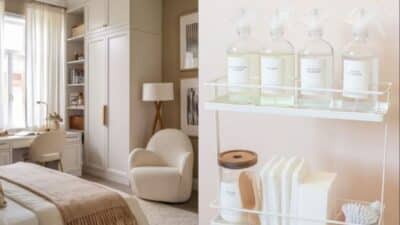Creating a home aesthetic DIY project allows you to personalize your living space in a way that reflects your style and creativity. By using simple materials and thoughtful designs, you can transform any room quickly and affordably. This approach gives you control over every detail while adding a unique character to your home.
Whether you want to update your walls, modify furniture, or introduce new textures, DIY projects offer practical ways to enhance your environment. These ideas are adaptable to different tastes and skill levels, making it easier for you to achieve a cohesive look that suits your lifestyle and preferences.
You don’t need to invest in expensive décor to make a significant difference. With some creativity and effort, your home can feel refreshed and welcoming through affordable, hands-on projects that bring warmth and personality to every corner.
Key Takeways
- Simple DIY projects can quickly change your room’s look.
- Customizing furniture and textures enhances your space’s appeal.
- Affordable materials help you create a warm, personalized environment.

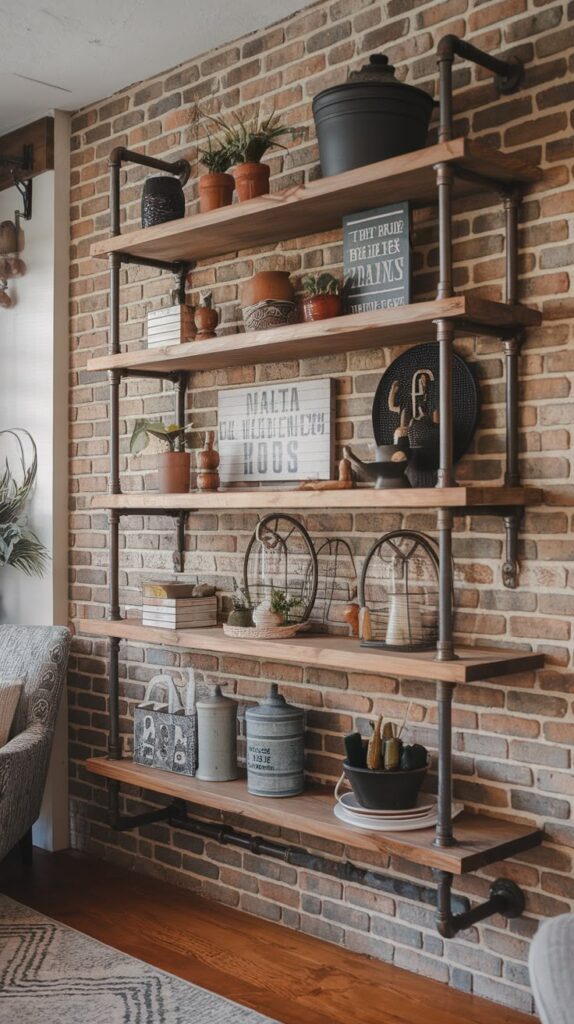
Fundamentals of Home Aesthetic DIY
Creating an appealing home environment with DIY projects means understanding key concepts that shape your space. You focus on the look you want, the practical reasons for doing it yourself, and how to select a style that reflects your personality and fits your space.
Understanding Home Aesthetics
Home aesthetics refers to the visual and sensory qualities that create the overall look and feel of your living space. This includes color schemes, textures, lighting, and layout. It’s not just about beauty; it’s also about creating a space where you feel comfortable and confident.
Consider how different elements work together—for example, how natural light enhances neutral colors or how contrasting textures add depth. Knowing these interactions helps you plan effective DIY projects, like installing peel-and-stick wallpaper or crafting personalized shelves, to improve your room’s vibe.
Benefits of DIY Decor
DIY home decor projects give you full control over your space’s style and budget. You can create unique pieces tailored to your needs rather than relying on mass-produced items. This approach often costs less and results in a more personalized environment.
Beyond savings and customization, DIY fosters creativity and problem-solving skills. It also provides a sense of accomplishment and ownership. Simple projects, such as floating shelves or handmade planters, can significantly elevate your interior design without requiring professional help.
Choosing Your Style
Selecting your style is essential to ensure your DIY projects complement your space. Start by identifying what attracts you visually—whether it’s minimalist, rustic, modern, or eclectic. Use tools like mood boards or Pinterest collections to gather ideas and maintain consistency.
If you’re looking to add a unique visual focal point to your DIY home decor project, custom neon signs are the perfect choice.
Neon signs are quick to produce, once you select your desired shape and color, production can begin immediately. You can choose the color to suit your room’s style, and you can even create your own pattern.
More than just lighting, neon signs are moving art that expresses your individuality, adding depth and warmth to your home’s aesthetic through light and shadow.
When choosing colors, materials, and motifs, consider the existing architecture and lighting of your home. Balance aesthetics with functionality to avoid over-cluttering. For example, if your space is small, choose light colors and multi-functional DIY decor items to keep it open and practical.


DIY Wall Transformations
You can change the look of your room significantly by focusing on your walls. Options like wallpaper, statement walls, personalized artwork, and various decor pieces allow you to customize space efficiently and with impact.
Applying Peel-and-Stick Wallpaper
Peel-and-stick wallpaper is a practical choice when you want to refresh your walls without long-term commitment. It is easy to apply and remove, making it ideal for renters or anyone who likes to change styles often.
Before applying, clean the wall surface to remove dust or grease. Measure your walls and cut the wallpaper into manageable strips. Align carefully to avoid bubbles or gaps. Work slowly and smooth out air pockets with a squeegee or a soft cloth.
Choose patterns and textures that complement your room’s aesthetic. Peel-and-stick wallpaper comes in a variety of finishes like matte, glossy, and even textured options, letting you add subtle depth or bold patterns with minimal effort.
Creating a Statement Wall
A statement wall draws attention and creates a focal point within a room. This can be done by painting one wall in a bold color or using materials like wood panels, stone veneer, or textured plaster.
When choosing a wall for your statement, pick one that naturally faces the main entrance or is visible from multiple angles. This maximizes visual impact.
Use deep, contrasting colors or unique finishes to differentiate this wall from the others. For example, a deep navy or charcoal can anchor a living room, while textured wood panels add warmth and detail.
Personalized Printable Artwork
Printable artwork lets you customize your wall art without the expense of framed originals. You can select designs from online platforms, print at home or a local shop, and choose frames that fit your style.
This approach gives you control over size, color, and theme. Rotate prints seasonally or switch them out whenever you want a fresh look.
Consider grouping several prints in a grid or asymmetrical arrangement for a gallery effect. Use frames in similar tones for cohesion or mix different styles for eclectic charm. Printable artwork is an easy way to add personality and customize your space precisely.


Incorporating Wall Decor
Wall decor includes shelves, mirrors, clocks, and 3D elements that add dimension and function to your walls. These items should be chosen to support the room’s purpose and design language.
For instance, floating shelves can hold plants, books, and collectibles that bring life to your walls. Mirrors help reflect light and make a room feel larger.
Arrange decor thoughtfully to avoid clutter. Use symmetry for a formal look or asymmetry for a casual, dynamic effect. Combining decor with other wall elements creates a layered, intentional design.
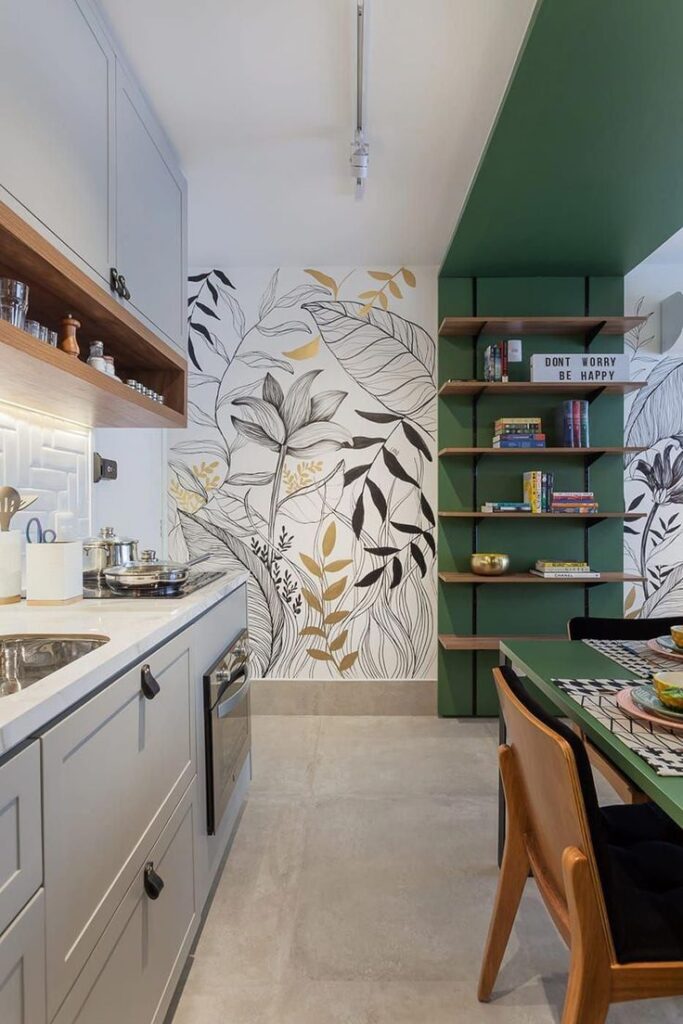
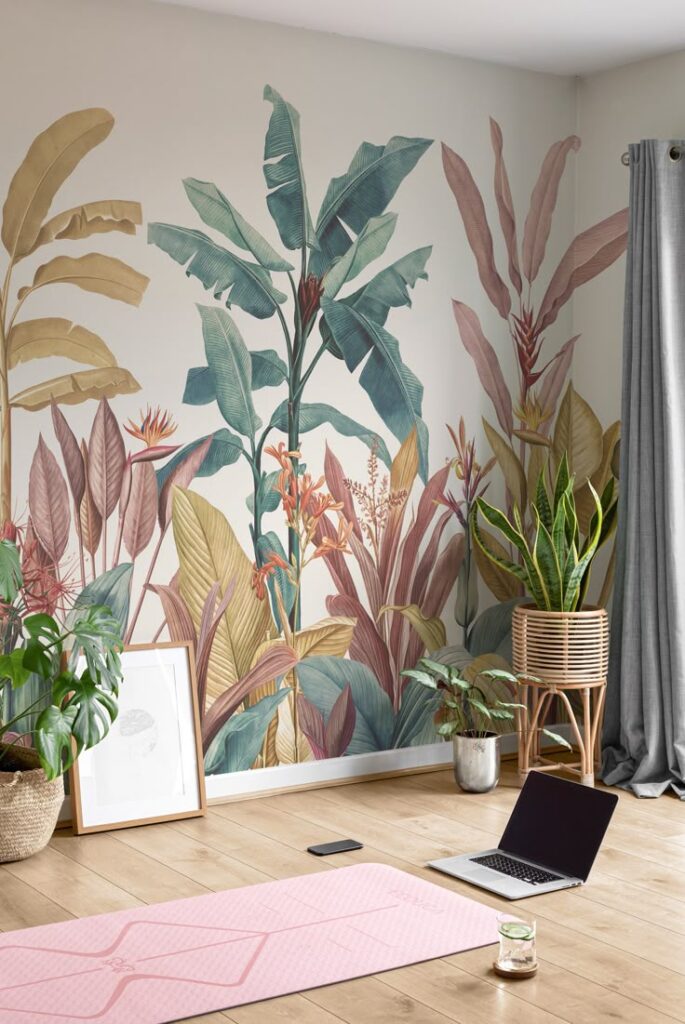
Creative DIY Furniture and Storage
You can enhance your living space with functional pieces that optimize storage and add style without a large budget. Simple materials and smart techniques allow you to customize your furniture and storage options for any room.
Building DIY Floating Shelves
DIY floating shelves are a practical way to add storage without bulky furniture. You’ll need wood boards, brackets or hidden mounts, screws, a drill, and level.
Start by measuring your wall space carefully. Cut the wood to your preferred length and sand all edges smoothly. Attach the mounting hardware to the wall studs for secure support.
Floating shelves work well for displaying books, decor, or kitchen items. Their minimalist look keeps rooms open and uncluttered. Choose finishes like natural wood stain or paint to match your room’s colors.
Budget-Friendly Upcycling Ideas
Upcycling old furniture can save money and reduce waste while creating unique pieces. You might transform a worn dresser into a storage bench by adding cushions and new handles.
Look for discarded items with good structure. Sand surfaces and repaint or stain them for a fresh look. Add functional touches such as drawer dividers, hooks, or casters.
Simple changes like replacing knobs or trimming fabric can update old furniture quickly. This approach is ideal if you want customized storage that fits your space perfectly without the cost of new builds.

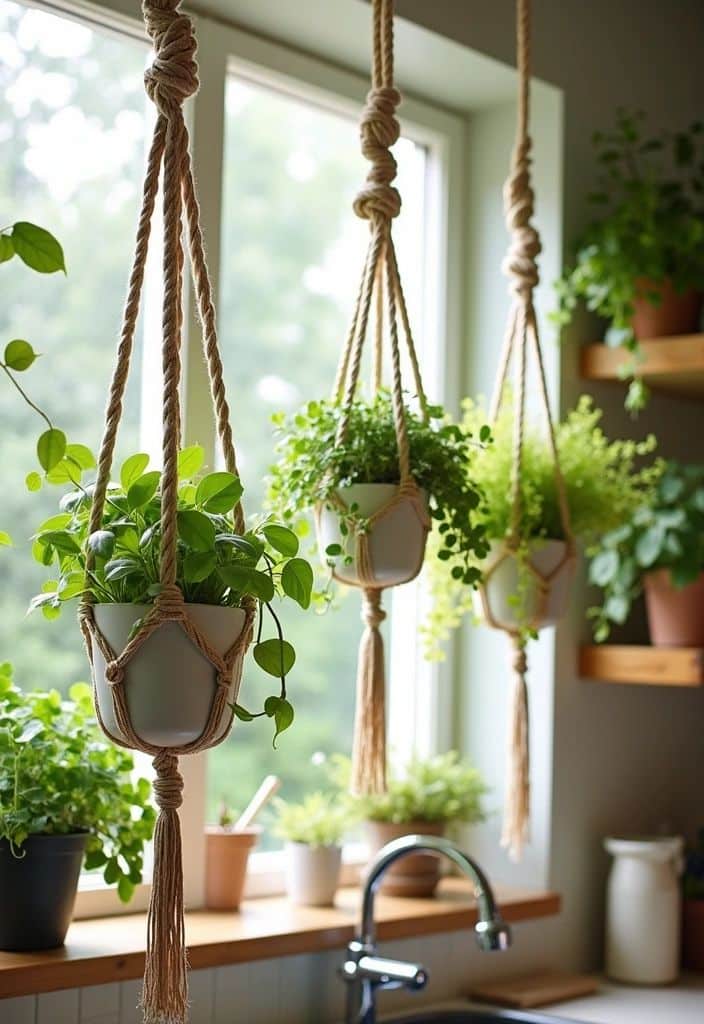
Enhancing Ambiance and Texture
Creating a comfortable atmosphere involves controlling light, scent, and physical elements. Using soft lighting and varied materials can make a room feel more inviting and visually interesting. Focus on simple additions that improve both how your space looks and feels.
Decorating with Candles
Candles provide warmth through both light and scent, directly influencing your room’s ambiance. Choose unscented candles for subtle mood lighting or scented ones to add relaxing fragrances like lavender or vanilla.
Place candles safely on stable surfaces such as trays or candle holders to avoid accidents. Grouping candles in varying heights creates depth and focus. Consider flameless LED candles if you prefer longer-lasting, safer options.
Using candles in corners or near seating areas enhances comfort without overwhelming the space. Keep the candle colors neutral to blend with most decor or select shades that complement your room’s palette.
Adding Cozy Texture
Texture adds visual depth and physical comfort to your living space. Incorporate materials like soft throws, knitted cushions, or woven rugs to create tactile interest.
Layering different textures — such as combining smooth leather with chunky knit blankets — can balance cool and warm elements. Using natural fibers like cotton or wool also promotes durability and ease of care.
Textured art or wall hangings offer a similar effect by breaking flat surfaces. Position these elements where you spend the most time to maximize the cozy feel without cluttering.
Integrating Fairy Lights
Fairy lights soften a room’s lighting and add a subtle decorative element. String them along window frames, bookshelves, or headboards for gentle illumination.
Select warm white lights for a calm, inviting glow. Battery-operated or USB-powered options offer flexible placement without messy cords.
Avoid over-clustering; instead, spread lights evenly to maintain a balanced look. Combining fairy lights with reflective surfaces, such as mirrors or glass decor, can amplify their effect in the room.

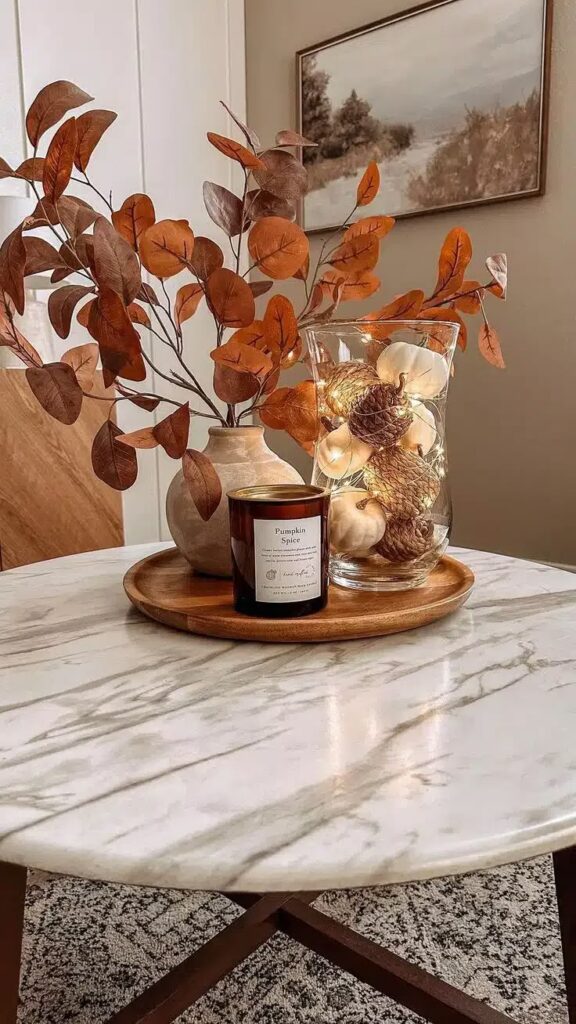
Bringing Nature and Comfort Inside
You can enhance your living space by introducing natural and comforting elements that require minimal maintenance. This brings a fresh look and a relaxing atmosphere without sacrificing practicality.
Using Artificial Plants
Artificial plants provide greenery without the need for watering or sunlight. They are ideal if you want the look of nature but cannot commit to plant care.
Choose high-quality artificial plants with realistic textures and colors to avoid a fake appearance. Place them where natural plants might struggle, like low-light corners or shelves.
Use different sizes and types for variety. Consider pots with natural materials such as wood or stone finishes to enhance the organic feel. You can also group plants together to create small indoor “gardens.”
Artificial plants can improve your space instantly, adding color and a natural vibe while eliminating upkeep concerns. They are a practical choice if you want to maintain a clean, green environment with ease.
Creating a Cozy Retreat
To make a cozy retreat, focus on soft textures and warm lighting. Layer your seating with plush cushions, throws, and rugs to create an inviting area for relaxation.
Incorporate natural materials like wood furniture or wicker baskets to add warmth and texture. Position your retreat near a window if possible, to benefit from natural light and views, enhancing comfort.
Use warm, dimmable lights or candles to create a soothing ambiance during evening hours. Introduce calming scents with essential oils or soy candles for added relaxation.
Your cozy retreat should be personalized with items that make you feel secure and at ease, such as books, blankets, or personal mementos. This space is dedicated to comfort and tranquility.
- 166shares
- Facebook0
- Pinterest165
- Twitter1



